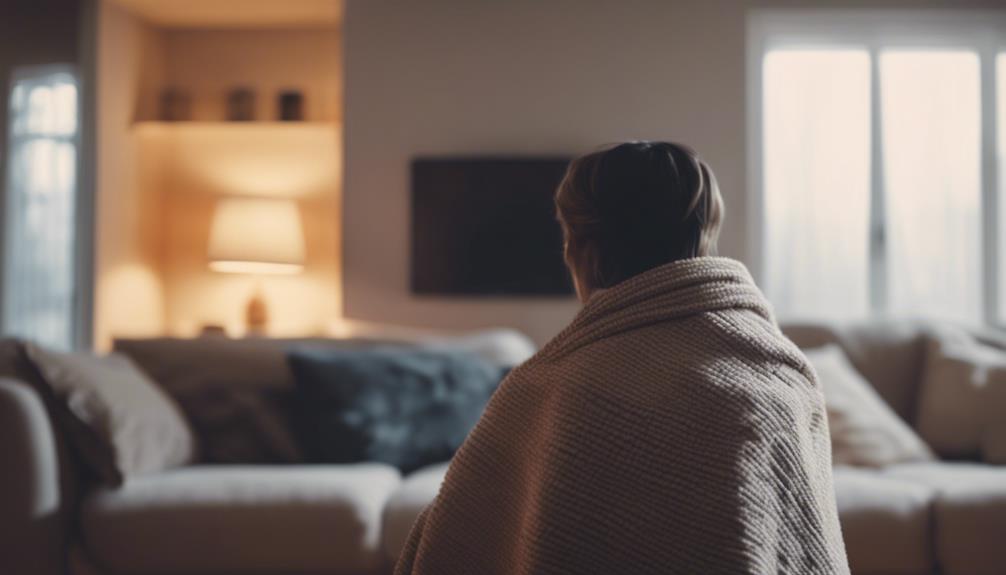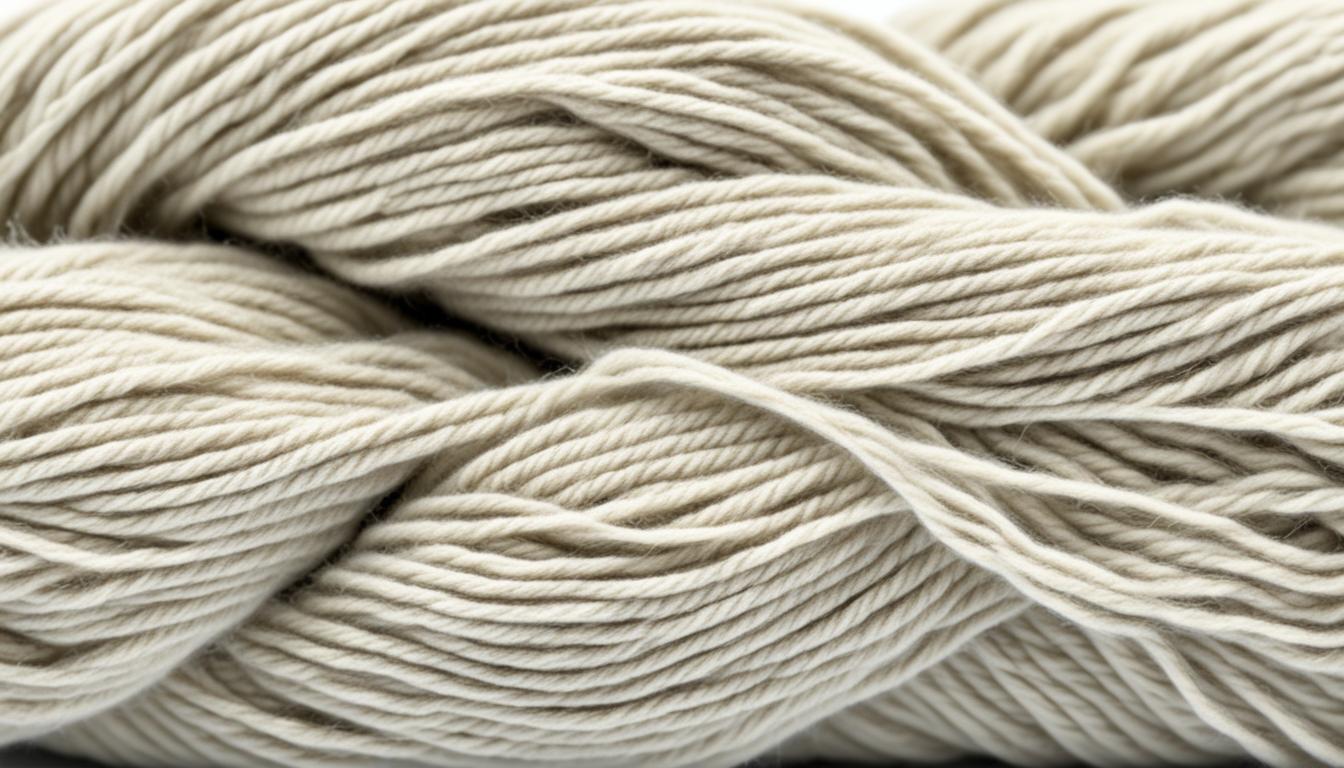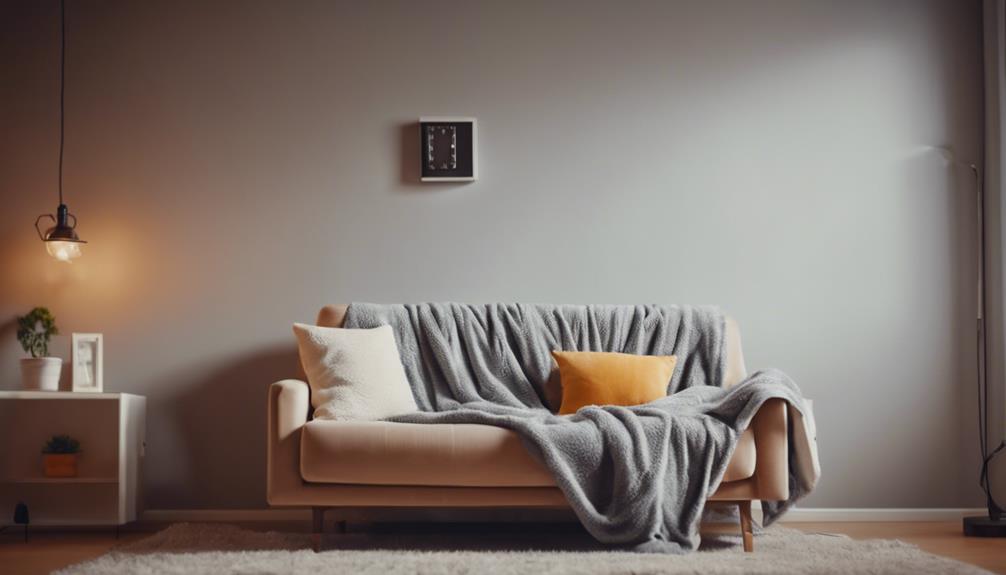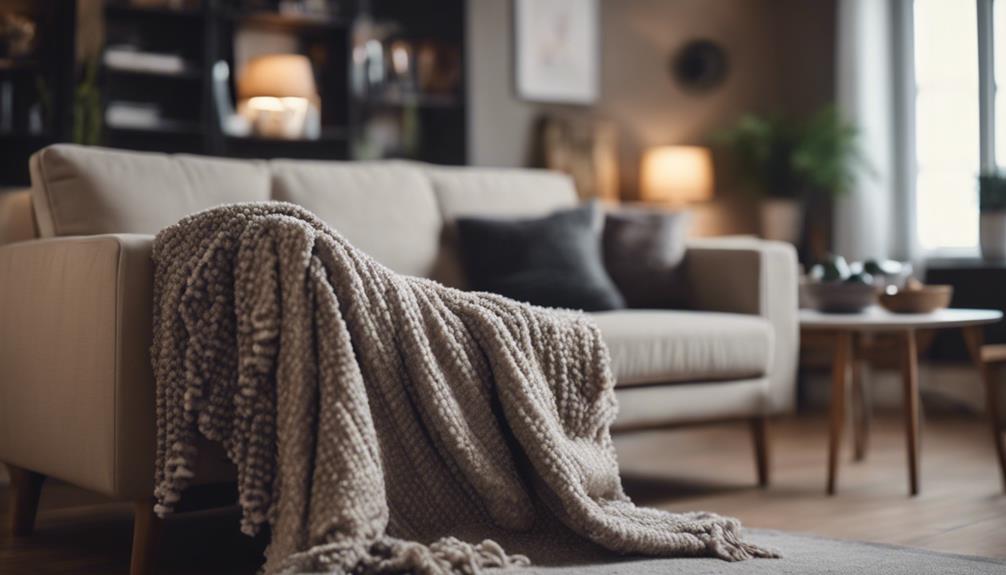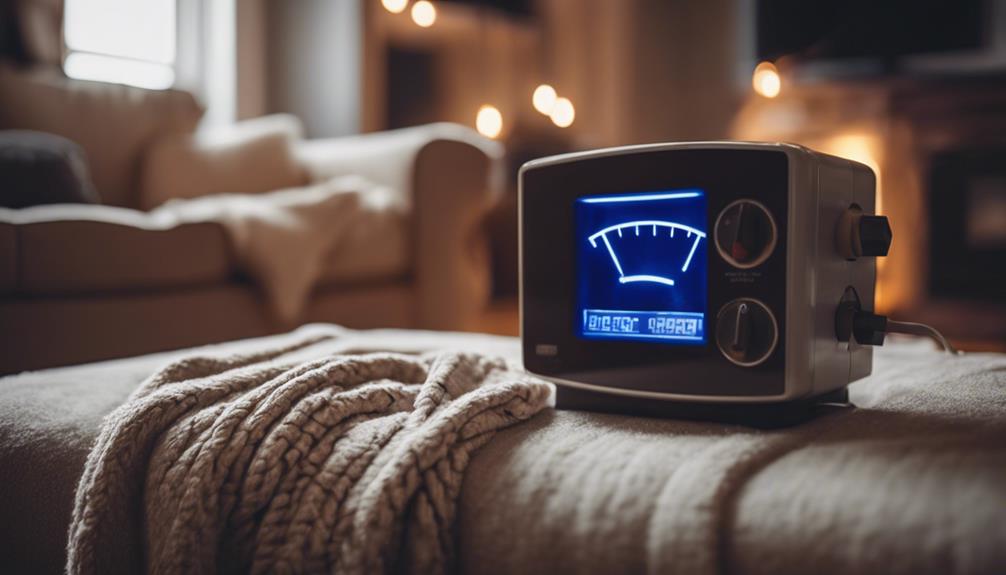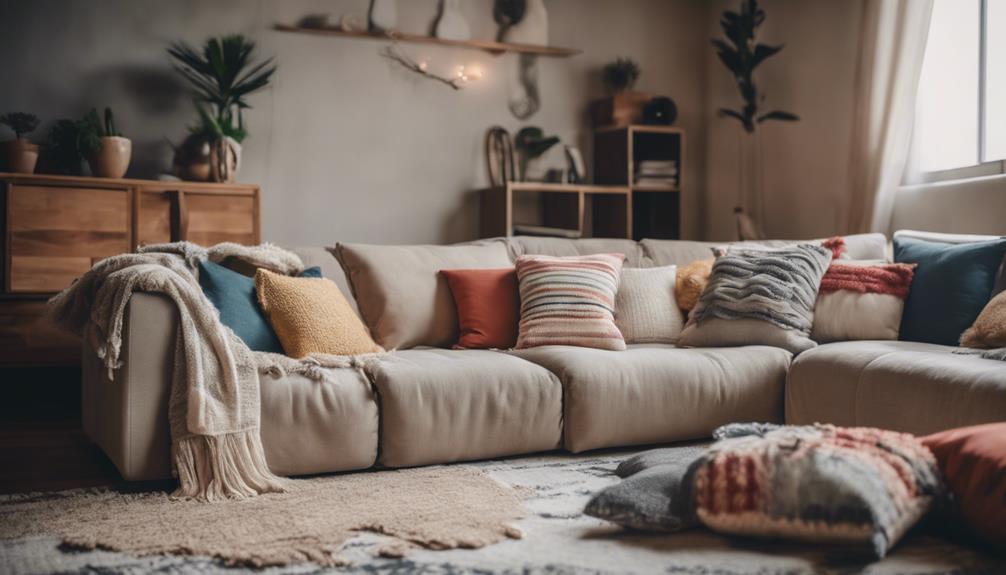When comparing a heated throw to traditional heating, a heated throw can be more cost-effective in the long run. The throw costs approximately 2.2 cents per hour to operate, while central heating can be considerably more expensive, potentially costing $256 per month. By targeting warmth selectively with a heated throw, you can reduce overall heating expenses by avoiding the need to heat entire rooms unnecessarily. This personalized approach to heating not only saves money but also offers individualized comfort. To explore further into the topic and investigate additional benefits, discover more in the detailed research findings above.
Key Takeaways
- Heated throws cost around 2.2p per hour, potentially cheaper than running central heating continuously.
- They offer localized warmth, reducing the need to heat entire rooms, leading to potential energy savings.
- Lower wattage options like 50W can cost around 1.6p per hour, contributing to cost efficiency.
- Experimenting with different heating strategies can help find a balance between comfort and cost-effectiveness.
- Utilizing heated throws as supplementary heating can lower overall heating expenses and provide personalized comfort.
Heated Throw Vs. Central Heating Costs
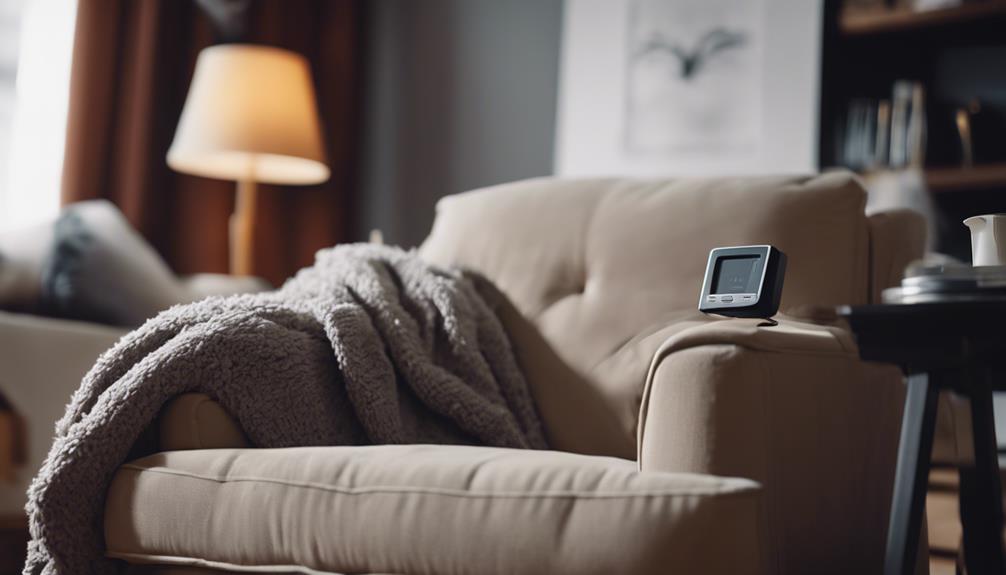
Have you ever wondered if a heated throw is more cost-effective than central heating? Running a heated throw typically costs around 2.2p per hour, offering potential savings compared to central heating. On the other hand, central heating costs can vary, with running it for 4 hours daily potentially costing around £198 per month.
By using a heated throw selectively, you can target warmth to where it's needed most, helping to reduce overall heating expenses. These electric blankets and throws are designed for personal warmth, presenting an alternative to heating entire rooms unnecessarily.
It's worth considering using a heated throw in conjunction with central heating to manage costs effectively while maintaining a comfortable room temperature. By incorporating a heated throw strategically, it's possible to save money on heating bills without compromising on warmth and comfort.
Initial Investment Comparison: Throw Vs. Heater
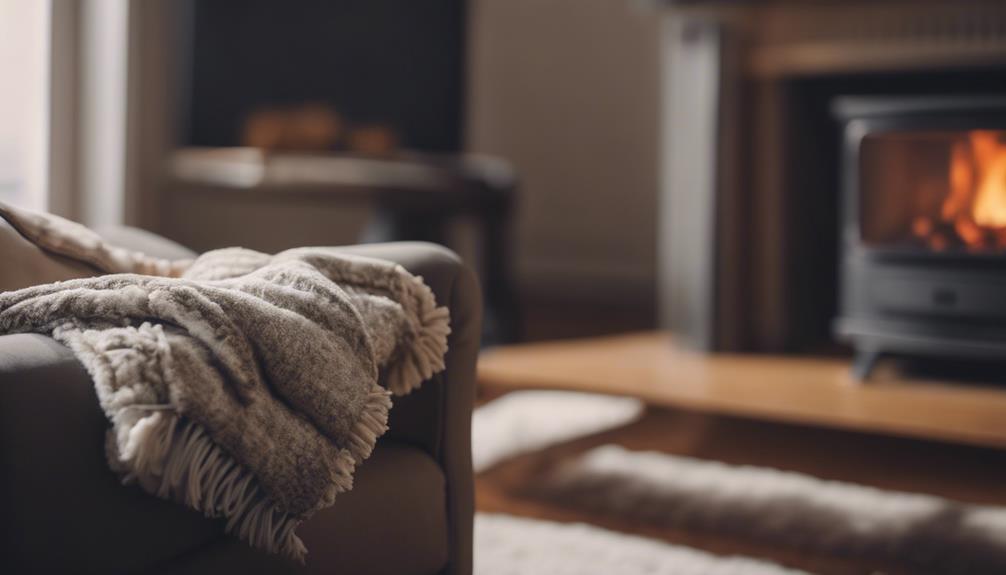
When comparing the initial investment for a heated throw versus a space heater, it's evident that heated throws typically offer a more cost-effective option. Heated throws can be purchased for around £50, while space heaters range from £30 to over £100. This lower upfront cost makes heated throws a more affordable choice for personal warmth, especially for those on a budget.
Consider the heating needs of the space and the budget available when deciding between a heated throw and a space heater.
- Heated throws are generally more cost-effective when it comes to the initial investment.
- Space heaters can require a higher upfront cost in comparison to heated throws.
- Evaluate your budget and heating requirements to determine the most suitable option for your needs.
Ongoing Running Costs Analysis
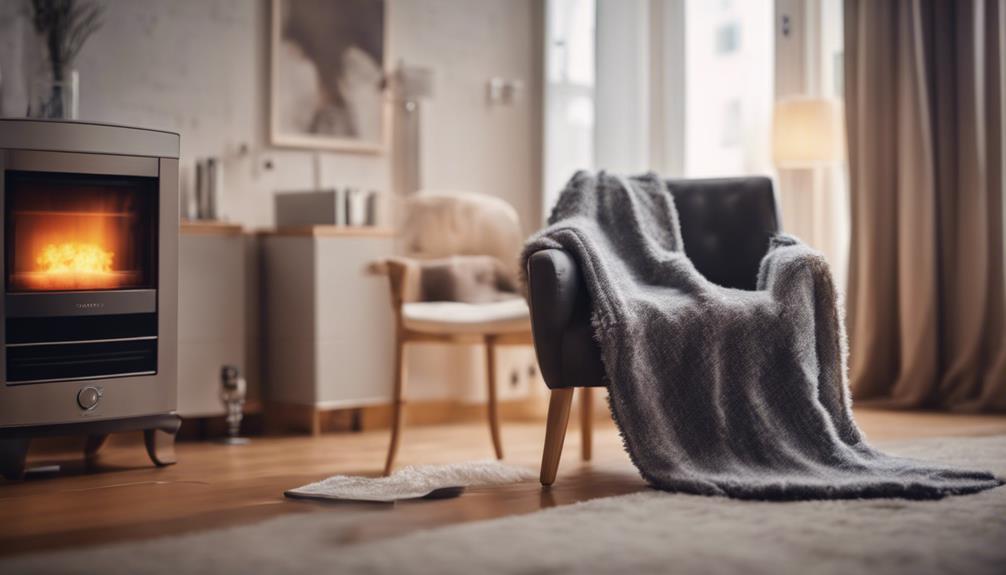
Analyzing the ongoing running costs of using a heated throw reveals its impact on daily gas expenses and the potential for energy-saving measures through alternative heating options. Running a heated throw can cost around 2.2p per hour, affecting daily gas costs by approximately 40p.
Comparing this cost with other appliance usage and central heating expenses can help gauge the cost-effectiveness of opting for a heated throw. Tools like consumption monitor plugs offer insights into energy consumption patterns when utilizing a heated throw, aiding in identifying areas for potential savings.
Testing various appliances and heating strategies, such as turning off central heating overnight, can pinpoint the most efficient energy-saving measures. Exploring alternative heating options like hot water bottles in conjunction with a heated throw may result in overall savings on heating expenses.
Considering these factors can assist in making informed decisions regarding the ongoing running costs and energy efficiency associated with using an electric blanket for heat.
Energy Efficiency of Heated Throws
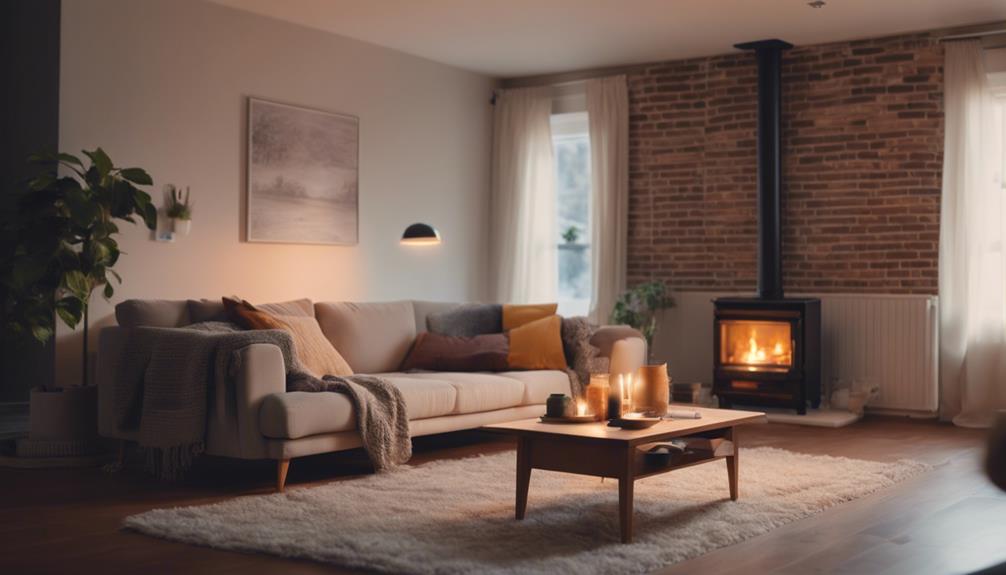
Heated throws can be an energy-efficient way to stay warm, as they only heat the user and not the entire room.
Improving house insulation can further enhance energy efficiency by reducing the need for high heat settings.
Pre-heating on a low setting and using lower heat settings overall contribute to saving energy and lowering energy bills.
Heating Costs Comparison
Considering the cost-saving benefits of using a heated throw for localized warmth, it becomes evident that these throws offer a more energy-efficient alternative to central heating. When comparing heating costs, electric blankets generally cost around 2.2p per hour to run, contributing to lower energy bills. Pre-heating a heated throw on lower settings can save energy compared to using high heat settings constantly.
Additionally, better house insulation can maximize the energy efficiency of heated throws by reducing the need for higher heat levels. Lowering the thermostat by just one degree can result in up to 10% savings on energy bills, making heated throws a cost-effective option for personal warmth.
Environmental Impact Assessment
By utilizing heated throws for localized warmth, we can significantly reduce energy consumption and positively impact the environment through enhanced energy efficiency. Heated throws, also known as electric blankets, offer a practical solution to lower energy usage by targeting warmth where it's needed most.
Compared to central heating, using a heated throw can lead to substantial energy savings due to their focused heat distribution. Pre-heating the blanket on low settings before use can further optimize energy efficiency. Additionally, improved house insulation enables the use of lower heat settings on heated throws, maximizing energy conservation.
Impact on Energy Bills
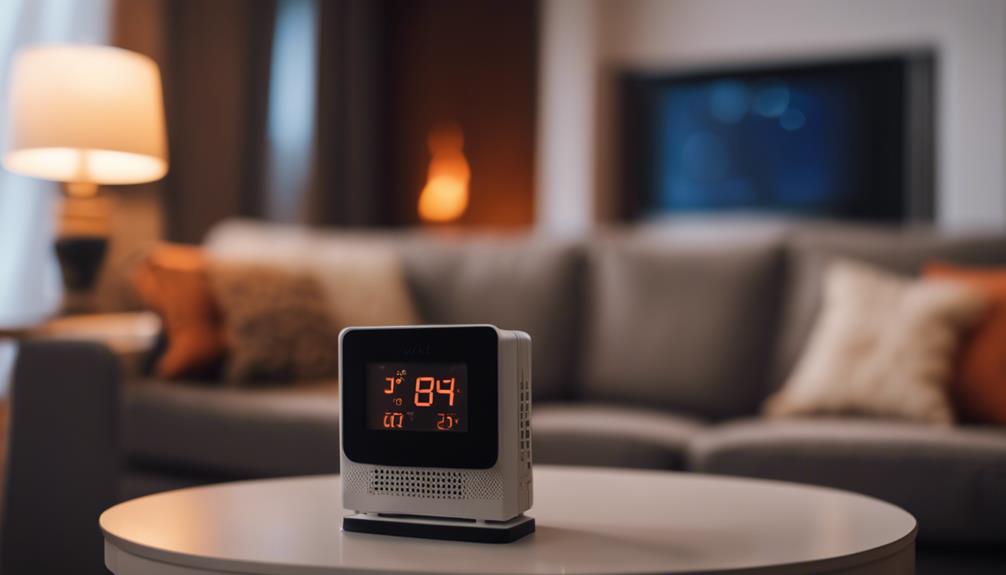
When evaluating the impact of using a heated throw on energy bills, it's crucial to compare the energy efficiency of this method with traditional heating.
By examining the energy consumption and related costs, one can ascertain the potential savings over time.
The long-term financial advantages of utilizing a heated throw as a supplementary heating source can result in decreased energy expenses and improved cost-effectiveness.
Energy Efficiency Comparison
How much does using a heated throw impact our energy bills in comparison to other heating methods? When considering energy efficiency, the daily increase in electric consumption by around 2.5kWh from a heated throw can affect overall costs.
Comparing the average cost of electricity at approximately 16p per kilowatt with running a heated throw at 2.2p/hr helps determine cost-effectiveness. To gain insight into the specific impact on energy bills, tools like consumption monitor plugs can assist in tracking usage. Exploring alternatives like hot water bottles can provide a comparison for potential savings.
- Daily electric consumption increases by around 2.5kWh
- Average cost of electricity is approximately 16p per kilowatt
- Comparing cost-effectiveness of running a heated throw at 2.2p/hr with other methods
Cost Savings Analysis
When evaluating the impact of a heated throw on energy bills, we can compare its cost-effectiveness with other heating methods to determine potential savings. Using a heated throw can cost about 2.2p per hour, which translates to roughly 40p added to daily gas expenses. To assess its efficiency, comparing these costs with those of running other appliances or central heating systems is crucial. Additionally, tools like consumption monitor plugs can provide valuable insights into energy usage patterns, aiding in identifying potential savings. Exploring alternative heating methods, such as electric blankets or hot water bottles, may offer cost-effective options. By utilizing a heated throw as a supplemental heating source, there is a possibility of reducing overall heating expenses, ultimately leading to energy savings.
| Heating Method | Cost to Run | Energy Savings |
|---|---|---|
| Heated Throw | 2.2p/hour | Potential savings |
| Central Heating System | Varies | – |
| Electric Blanket | 2p/hour | Savings possible |
Long-Term Financial Benefits
Incorporating a heated throw into our heating strategy can contribute to lowering overall energy costs and improving financial efficiency.
- Price: The initial cost of a heated throw is generally lower than installing or upgrading a central heating system.
- Energy: By using a heated throw selectively, we can reduce the overall energy consumption of our home.
- Financial Benefits: Supplementing central heating with a heated throw can lead to long-term cost savings and improved financial efficiency.
Localized Warmth Benefits
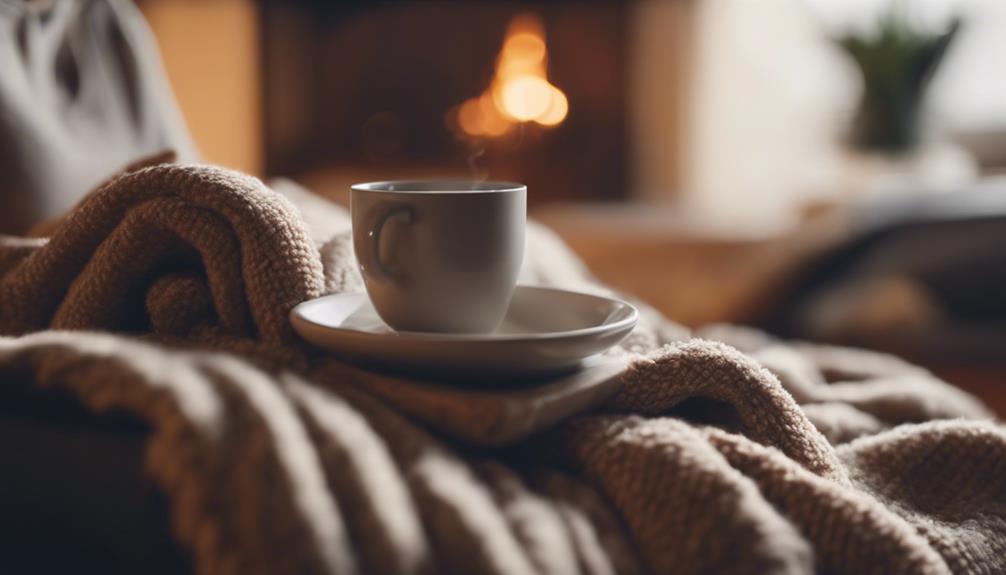
Experiencing targeted warmth through a heated throw can offer personalized comfort and help save on heating expenses. Heated throws provide localized warmth directly to the user, making them a cost-effective and energy-efficient alternative to heating up an entire room.
These throws are designed to offer personal comfort and warmth while sitting or lounging, allowing individuals to enjoy warmth where they need it most without increasing heating bills. By focusing heat on specific areas, heated throws help reduce overall heating costs by avoiding the need to heat an entire space.
This targeted approach not only promotes energy efficiency but also guarantees that individuals can enjoy a cozy environment without the added expense of heating unused areas. Utilizing heated throws for localized warmth presents a practical and economical solution for those seeking personalized comfort while minimizing heating costs.
Throw Wattage Considerations
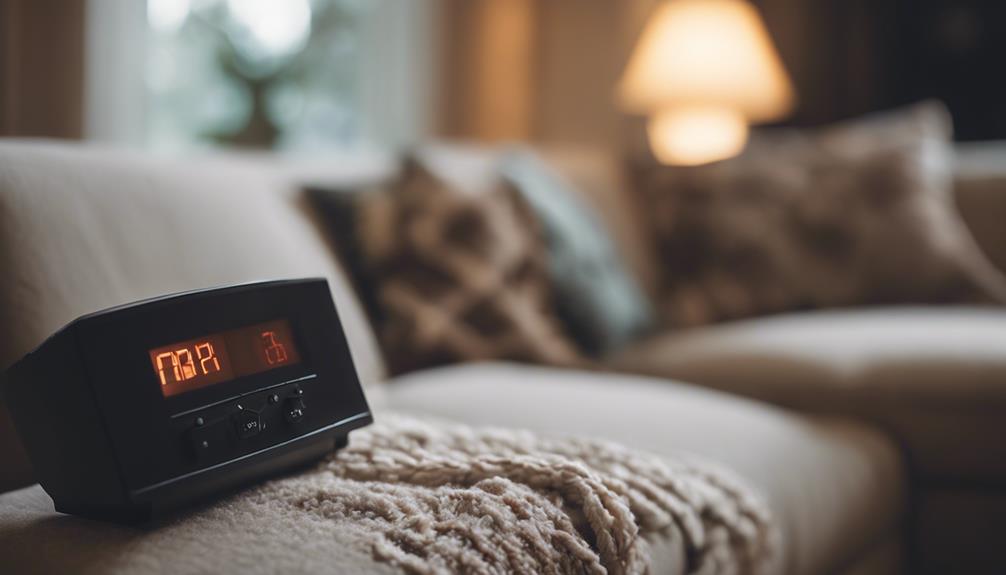
Considering the wattage of a heated throw is crucial for evaluating its energy consumption and cost efficiency compared to other heating methods. Heated throws typically range from 50W to 150W, impacting their electricity usage and cost per hour. Lower wattage throws, like a 50W one, can cost around 1.6p per hour to run, making them more cost-effective than higher wattage options, such as a 150W throw that may cost around 4.8p per hour.
Understanding the wattage of the throw is essential for estimating its energy consumption and cost effectiveness. According to the Energy Saving Trust, choosing a lower wattage heated throw can contribute significantly to cost savings on energy bills. By opting for a lower wattage option, consumers can enjoy the warmth of a heated throw while also being mindful of their energy expenses.
Comparing Heating Alternatives
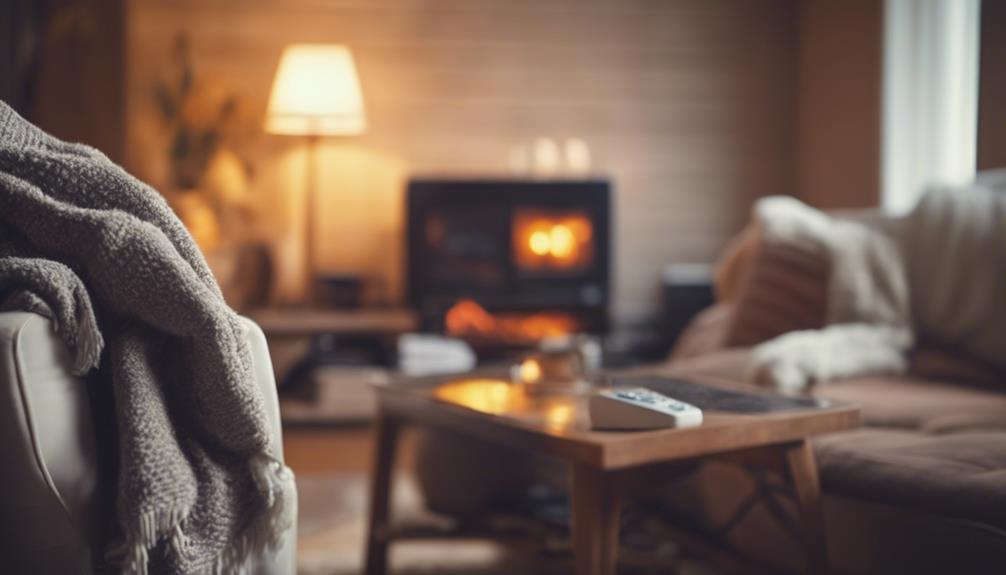
When comparing heating alternatives, it's important to factor in the cost efficiency and localized warmth provided by a heated throw compared to traditional heating methods. A heated throw can cost around 2.2p per hour to run, making it a potentially cost-effective option, especially when targeting personal warmth.
Unlike central heating, which heats entire rooms, electric blankets and throws offer localized heating, which can lead to savings on energy costs. It's vital to take into account the energy prices, wattage, and efficiency of both options when deciding between a heated throw and traditional heating methods.
Experimenting with different strategies, such as combining a heated throw with lower central heating settings, can help strike a balance between comfort and cost savings. By understanding the costs to run electric blankets per hour and the benefits of heating rooms selectively, individuals can make informed decisions based on their heating needs and budget constraints.
Cost-Effectiveness Evaluation
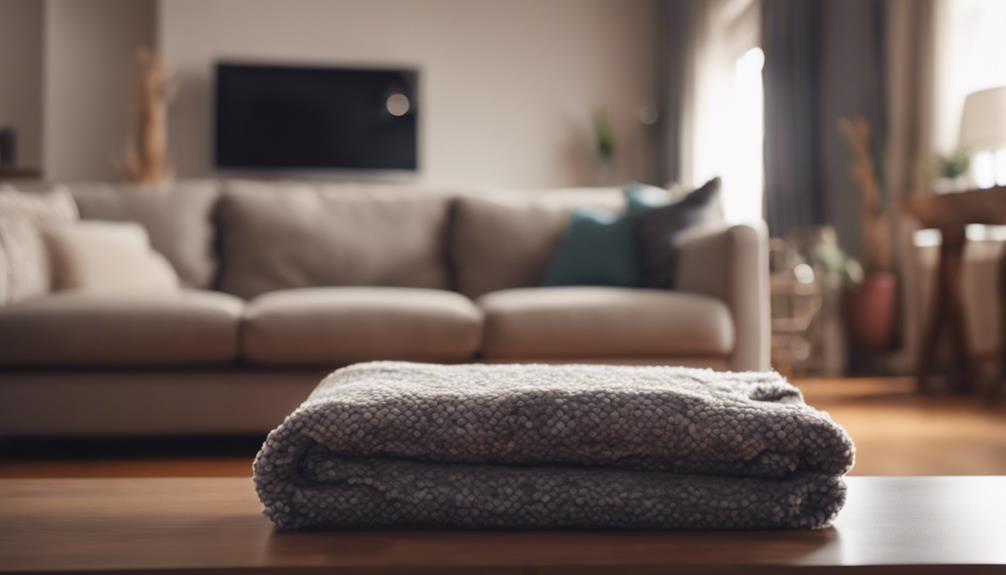
To assess the cost-effectiveness of using a heated throw, one must take into account the hourly running cost and its impact on overall heating expenses. Running a heated throw can cost around 2.2p per hour, depending on the wattage and settings.
When comparing costs, using a heated throw may be more economical than running central heating continuously, as electric blankets and throws can help lower overall heating costs by allowing reduced central heating usage. Employing lower heat settings and pre-heating on low can contribute to energy efficiency and cost savings.
It's essential to factor in these elements when evaluating the cost-effectiveness of using a heated throw compared to traditional heating methods. By incorporating lower heat settings and implementing energy-saving measures, one can improve the efficiency and affordability of heating solutions in the long run.
Frequently Asked Questions
Do Heated Throws Use a Lot of Electricity?
Heated throws generally consume between 150-200 watts per hour, costing around 2.2p to 3p for one hour of use. They're designed more for personal warmth than heating entire rooms.
By strategically using heated throws, we can reduce overall heating costs. Efficient usage involves pre-heating on low settings and adjusting room temperatures accordingly.
Is It Cheaper to Turn up the Heat or Use an Electric Blanket?
Using an electric blanket can be a cost-effective way to stay warm without cranking up the heat. It offers personalized warmth, potentially saving on energy bills.
Lowering the thermostat by just one degree can lead to significant energy savings. By combining an electric blanket with lower central heating settings, we can optimize energy usage and potentially reduce overall heating costs.
It's a practical and efficient choice for staying cozy while being mindful of expenses.
How Much Does It Cost for a Heated Throw to Run?
When considering the cost of running a heated throw, it's essential to factor in the wattage of the specific throw you're using. The higher the wattage, the more it will cost to run.
Monitoring tools like consumption monitor plugs can help track the impact of a heated throw on energy usage, allowing for better control over electricity expenses.
Understanding the wattage and usage patterns of your heated throw is vital for managing running costs effectively.
What Is the Cheapest Form of Heating to Run?
When contemplating the most economical form of heating to operate, it's crucial to assess factors like efficiency and cost per unit of heat produced.
Various options, such as electric blankets, heated throws, space heaters, and central heating systems, offer different cost structures based on energy consumption.
Evaluating these options based on energy efficiency ratings, upfront costs, and ongoing expenses can help determine the most cost-effective heating method for your needs.
Can Using a Heated Throw Reduce the Need for Multiple Throw Pillows?
Using a heated throw can potentially reduce the need for multiple throw pillows, cutting down on the quantities for throw pillow fabric. The warmth and coziness provided by the heated throw may make it unnecessary to surround oneself with as many decorative pillows for comfort.
Conclusion
To sum up, a heated throw can be a cost-effective alternative to central heating, providing localized warmth and potentially saving on energy bills.
Like a cozy blanket on a chilly night, a heated throw offers comfort and efficiency in a convenient package.
By carefully considering wattage, initial investment, and ongoing running costs, individuals can make an informed decision on whether a heated throw is a cheaper option for staying warm during the colder months.
